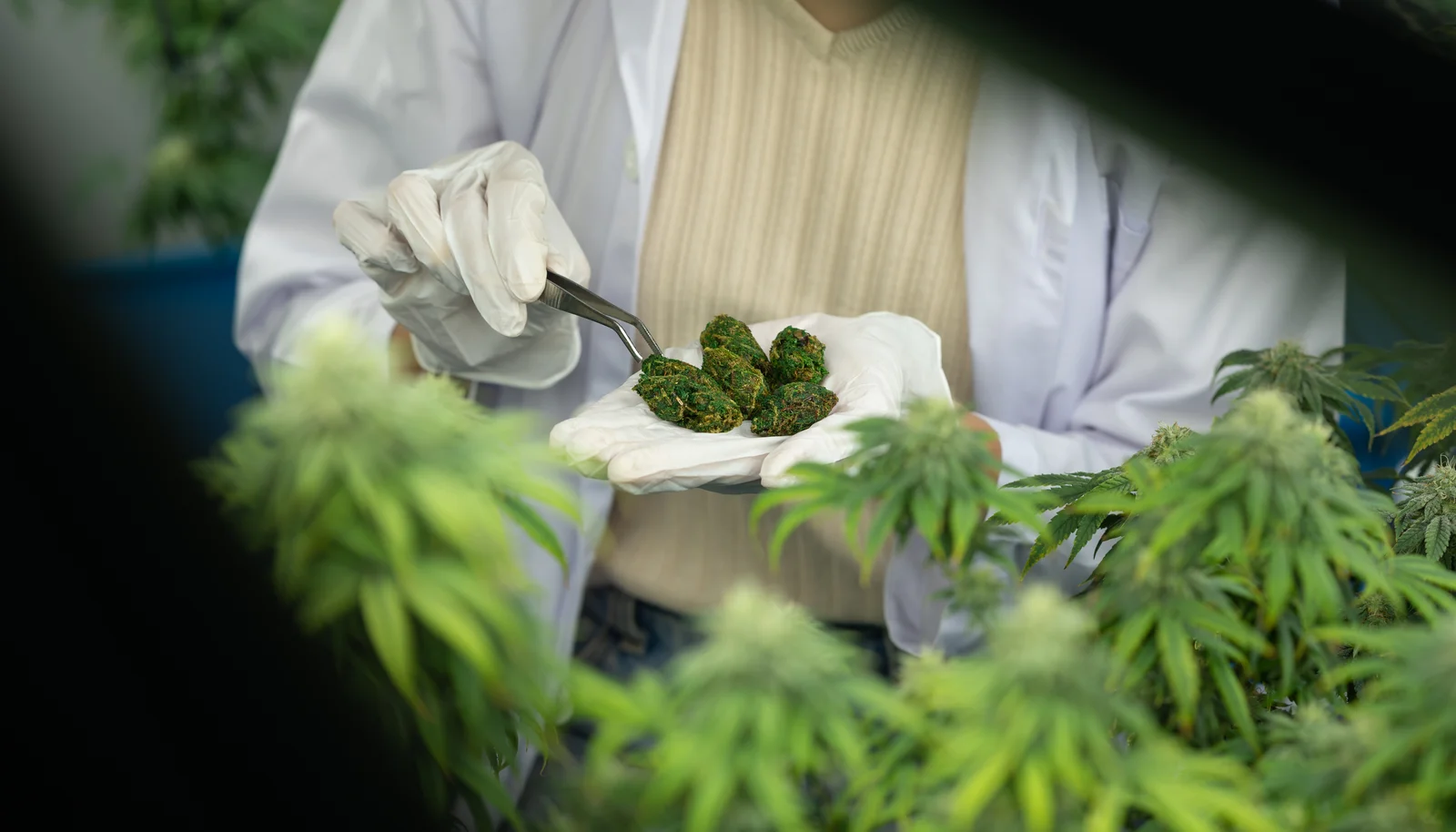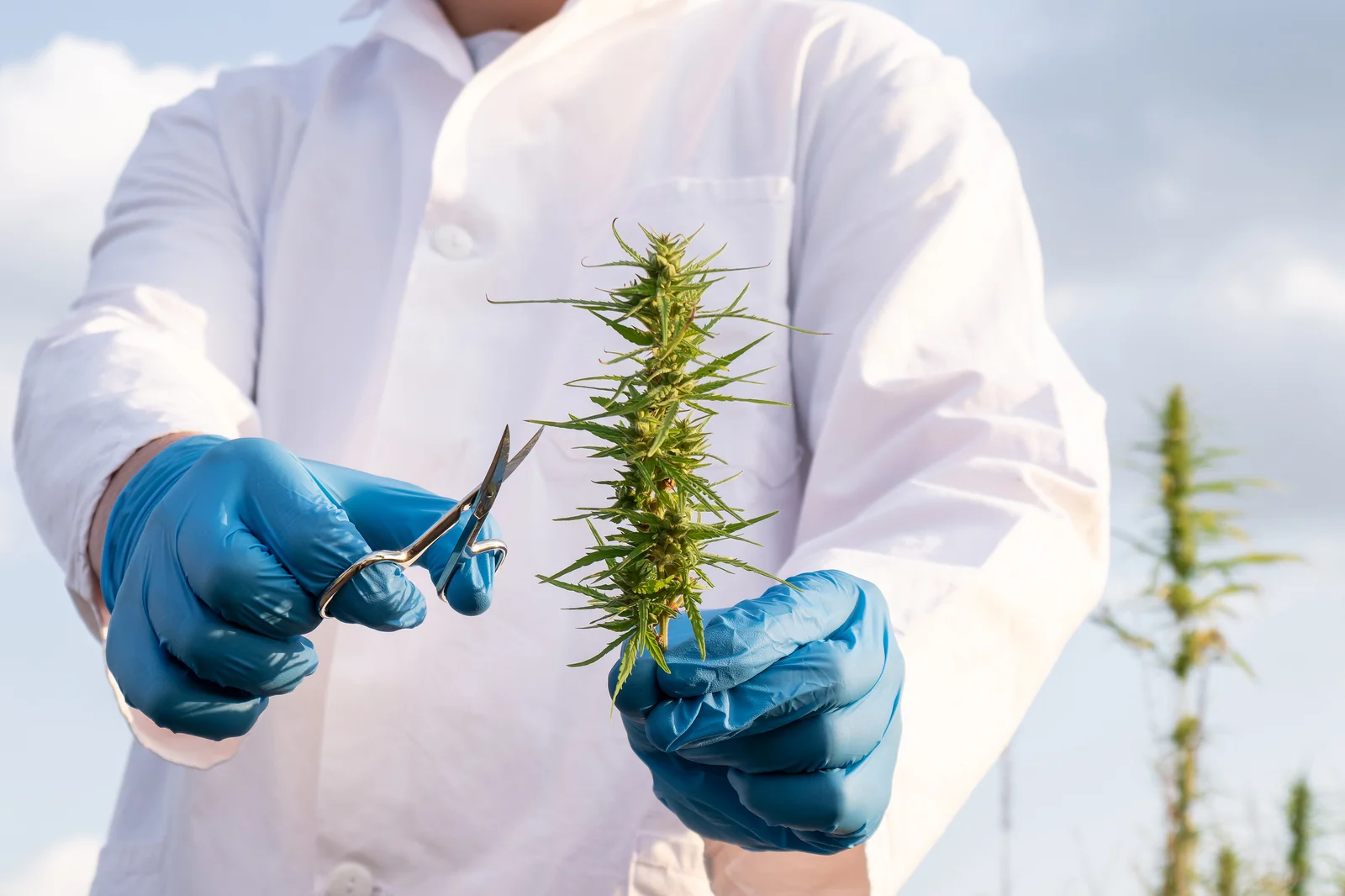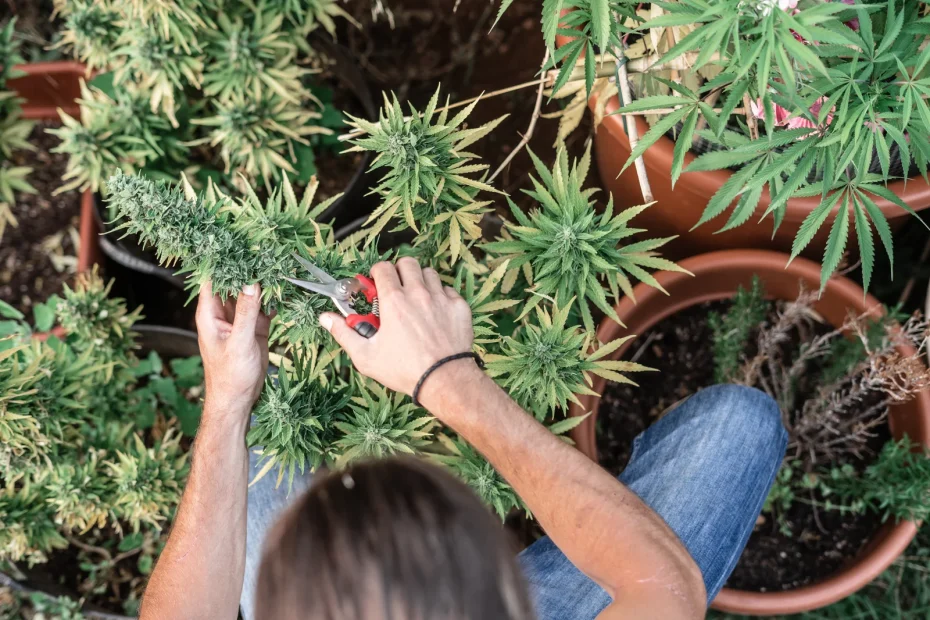In the vibrant world of cannabis cultivation, understanding cannabis types is crucial for both new and seasoned growers. As a professional cannabis cultivator, I have found that mastering the distinctions between Indica, Sativa, and Hybrid strains not only guides cultivation practices but also enhances the overall quality of the harvest. In this article, learn about understanding cannabis types, considering cultivation techniques and frequently asked questions about cannabis flowering and harvesting.
Be sure to checkout our article on Cannabis Genetics and why they are important.
Indica: The Sturdy Companion
Indica strains are renowned for their robust and resilient nature. They originate primarily from the mountainous regions of Central Asia, where they have adapted to harsher climates. As a cannabis cultivator, identifying an Indica strain is usually straightforward, as they tend to exhibit broad leaves and compact, bushy stature.

Cultivation Techniques for Indica
Indica plants thrive in cooler climates and are generally quicker to flower than their Sativa counterparts. The cannabis flowering stage for Indica strains can last between 7 to 9 weeks. During this time, it’s essential to monitor environmental factors closely, maintaining optimal temperature and humidity to promote healthy growth.
Indica strains typically produce dense buds, and as a cannabis cultivator, it’s critical to support the branches to prevent them from bending or breaking under the weight.
Sativa: The Tall and Lanky Marvel
Sativa strains contrast Indica with their tall, slender stature and narrow leaves. Originating from equatorial regions such as Southeast Asia and Central America, these strains are suited to warmer climates. They are often celebrated for their uplifting and energetic effects.
Cultivation Techniques for Sativa
Sativa plants require longer flowering times, usually ranging from 10 to 14 weeks. The cannabis flowering stage week by week involves detailed observation to ensure the plant receives sufficient light, as Sativas are light-demanding.
Pruning and training are essential for Sativa strains to manage their height, which can often lead to cultivation challenges. A cannabis cultivator must be vigilant to provide support and maximize light exposure, often requiring advanced techniques like Screen of Green (ScrOG).
Hybrid: The Best of Both Worlds
Hybrids are versatile strains bred from both Indica and Sativa parent plants. They offer a unique combination of characteristics, often tailored to achieve specific outcomes in growth patterns and effects.
Cultivation Techniques for Hybrid
Hybrids can vary significantly in terms of growth patterns and flowering durations, depending on their genetic makeup. A cannabis cultivator should conduct a cannabis consultation or research on the specific hybrid strain to optimize conditions. Generally, hybrids can either lean towards Indica or Sativa traits, thus impacting the flowering time and cultivation method.
Monitoring the cannabis flowering stage week by week is critical in hybrid cultivation, allowing for timely interventions to maintain plant health.
When Are Cannabis Plants Ready to Harvest?
Understanding when cannabis plants are ready to harvest is a pivotal aspect of successful cultivation. As a rule of thumb, examining the trichomes under magnification provides essential cues. Clear trichomes indicate immaturity, while cloudy trichomes signal peak THC levels. For those seeking a calming effect, waiting for amber trichomes might be beneficial. This subtle timing will optimize the desired effects of your harvest.

FAQ: Understanding Cannabis Types
How does a cannabis cultivator differentiate between Indica, Sativa, and Hybrid strains?
As a professional cannabis cultivator, understanding cannabis types and distinguishing between Indica, Sativa, and Hybrid strains involves understanding their morphology, effects, and growth patterns.
- Indica: Typically, Indica plants are shorter and bushier with wide, broad leaves. They typically have a shorter flowering cycle and are well-suited for growing in cooler climates. Indicas are known for their relaxing, sedative effects, often used for nighttime relief of insomnia and pain.
- Sativa: Sativa plants grow taller and less densely than Indicas and have narrower, serrated leaves. They have a longer flowering cycle and thrive in warmer climates. Sativas usually offer uplifting, cerebral effects, often enhancing creativity and focus, making them more suitable for daytime use.
- Hybrid: These are crosses between Indica and Sativa strains, designed to combine traits of both for particular benefits. Hybrids can vary significantly in appearance, effects, and growth patterns depending on their genetic makeup, providing a blend of the parental strains’ characteristics. It’s essential to know the dominant parent to best guide cultivation.
What are the unique cultivation requirements for Indica, Sativa, and Hybrid cannabis types?
Understanding cannabis types and the specific needs that influence how they should be cultivated:
Indica Requirements
- Light Needs: Due to their shorter stature, Indicas fit well in indoor and confined growing spaces. They require less vertical space and can flourish under intense artificial lighting.
- Climate: Indicas are better suited to cooler environments.
- Flowering Time: Typically 7-9 weeks, making them faster to harvest.
Sativa Requirements
- Light Needs: Require more vertical space since they grow tall and tend to stretch. Outdoors, they thrive under long sunlight hours.
- Climate: Best grown in warm, tropical climates.
- Flowering Time: Can take 10-16 weeks, demanding patience and careful planning.
Hybrid Requirements
- Light Needs & Climate: Requirements vary depending on whether the hybrid leans more towards Indica or Sativa traits.
- Flowering Time: This can vary significantly, so knowing the specific hybrid strain is crucial to estimate the timeline properly.
How does the cultivation process influence the properties of Indica, Sativa, and Hybrid cannabis?
The cultivation process plays a significant role in developing the cannabinoid and terpene profiles of cannabis plants, impacting their potency, flavor, and effects.
- Nutrients & Soil: Providing the right balance of nutrients at different growth stages is vital. Indicas may need slightly less nitrogen during the flowering stage than Sativas.
- Watering: While Indicas might handle more straightforward, heavier watering cycles, Sativas usually perform better with lighter, more frequent watering due to their tropical origins.
- Pruning & Training: Indicas benefit from low-stress training due to their bushy nature, while Sativas may require topping to manage height. Hybrids depend on their dominant characteristics.
- Harvest Time: Influences the cannabinoid profile. For example, harvesting an Indica early can enhance its uplifting properties, while harvesting later can accentuate relaxation effects.
What advice do experienced cannabis cultivators have for growing Indica, Sativa, and Hybrid types?
- Indica Tips: Due to their compact size, Indoors they’re excellent for SoG (Sea of Green) or ScrOG (Screen of Green) methods to maximize yield. Keep humidity levels lower during flowering to prevent mold.
- Sativa Tips: Given their height, consider outdoor cultivation if space allows. If grown indoors, ensure adequate vertical space. Invest time in training the plant throughout its growth to enhance yield and manage height.
- Hybrid Tips: Understanding the parent strains helps tailor care. Balancing Indica and Sativa care practices based on the dominant traits will improve the growth outcome.
Remember, the environment plays a crucial role, and each growing setup might need adjustments to accommodate strain-specific needs. Monitoring and adapting to the plants’ responses can provide the best chance for a successful harvest.
Conclusion
In summary, the diversity among Indica, Sativa, and Hybrid strains highlights the importance of tailored cultivation practices. A skilled cannabis cultivator pays close attention to the flowering stage, making adjustments to support plant health and enhance yield. From understanding cannabis types weekly growth patterns to predicting the perfect harvest time, this foundational knowledge ensures a successful growing venture. By understanding cannabis types, cannabis cultivators can confidently guide their plants to a thriving harvest, ensuring both quality and potency in their final product.
Streamline Cannabis CultivationRecommended For You
Cannabis Rescheduling to Schedule III: Complete 2025 Business Guide
December 18, 2025Battle of the Buds: Crafting a Green Revolution Against Thrips on Cannabis Plants
December 18, 2025Chaotic Harmony: How Modern Supply Chain Production Planning Redefines Efficiency in a Turbulent World
December 17, 2025About GrowerIQ
GrowerIQ is changing the way producers use software - transforming a regulatory requirement into a robust platform to learn, analyze, and improve performance.
To find out more about GrowerIQ and how we can help, fill out the form to the right, start a chat, or contact us.

